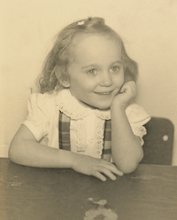My dad had already passed away before I began, and I had lost touch with my Danish cousins, but I still remembered what he'd told me, and I had much of his documentation and had actually known my grandparents and their other children and grandchildren. I didn't know a lot of Danish, but since Danish is related to German and I had studied that language in college, I was able to make good progress on my Danish ancestry.
My mother's ancestry was another story. Mom was more than willing to pitch in and help with her side of the family, digging out old photos and documents, dredging up memories, and calling other relatives who might have additional information. Meanwhile, I prowled the Internet and read books on how to do genealogical research and wished that I had a brother or sister to help out.
If only that cousin who had worked out a family tree for my paternal grandfather had died without sharing any of it . . . Well, you have to play the cards you’re dealt. I was going to have to work it out for myself.
Ten years ago, internet genealogy was just starting to gear up into the monster it is today. There were some family trees on ancestry.com and rootsweb.com (which were separate entities then); there were some surname and locality message boards and mailing lists; some of the US censuses were online; and a few genealogical organizations (such as GenWeb) had websites with helpful information; that was about it. Even the Ellis Island website wasn’t up yet. I would have to do most of my research with microfilms.
It took me six long months to work up the nerve to go down to the local Family History Center and start ordering microfilms. I know that sounds a little strange, but I’ve always been the kind of person who has to rehearse what I’m going to say before I call the pharmacy to order a refill on a prescription. Even then, I concentrated first on getting and saving documentary proof of everything that we all thought we knew.
Why do I collect and save every bit of documentation that I can find? Well, the first reason is that we don’t always know what we think we know. Without a DNA test, the identity of your own father is a matter of faith.
Later on I discovered a third reason to have a digital copy or a photocopy of every document: every time I ran into a brick wall and didn’t know what to do next, I could go back and re-examine the records I’d already found, to see what I might have missed the first time. This is especially useful when I’m dealing with antique handwriting, damaged documents, and documents written in a foreign language: l usually discover something I missed the first time around.




Nice
ReplyDelete